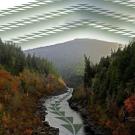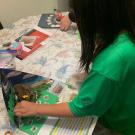Live in Balance with the Natural World - Take Only What You Need
HSS 4.1, HSS 4.2, HSS 4.2.1, HSS 4.5, HSS 4.5.5, 4-ESS3-1, 4-ESS3-2, RL.4.2, RL.4.3, RL.4.7, SL.4.2, SL.4.6, WL.CM1.N: Interpretive Communication, WL.CL2.N: Cultural Products, Practices, and Perspectives, WL.CL4.A: Intercultural Influences, WL.CN2.N: Diverse Perspectives and Distinctive ViewpointsThis lesson immerses students in the Yurok Tribe's rich cultural heritage and their deep-rooted connection to sustainable environmental practices. It explores the tribe’s traditional beliefs and practices related to natural resource management, focusing on the values of sustainability, community well-being, and ecological balance. Students will learn how the Yurok people prioritize responsible resource use, such as with salmon, Pacific lamprey, elk, and seaweed, ensuring these resources are available for future generations.

